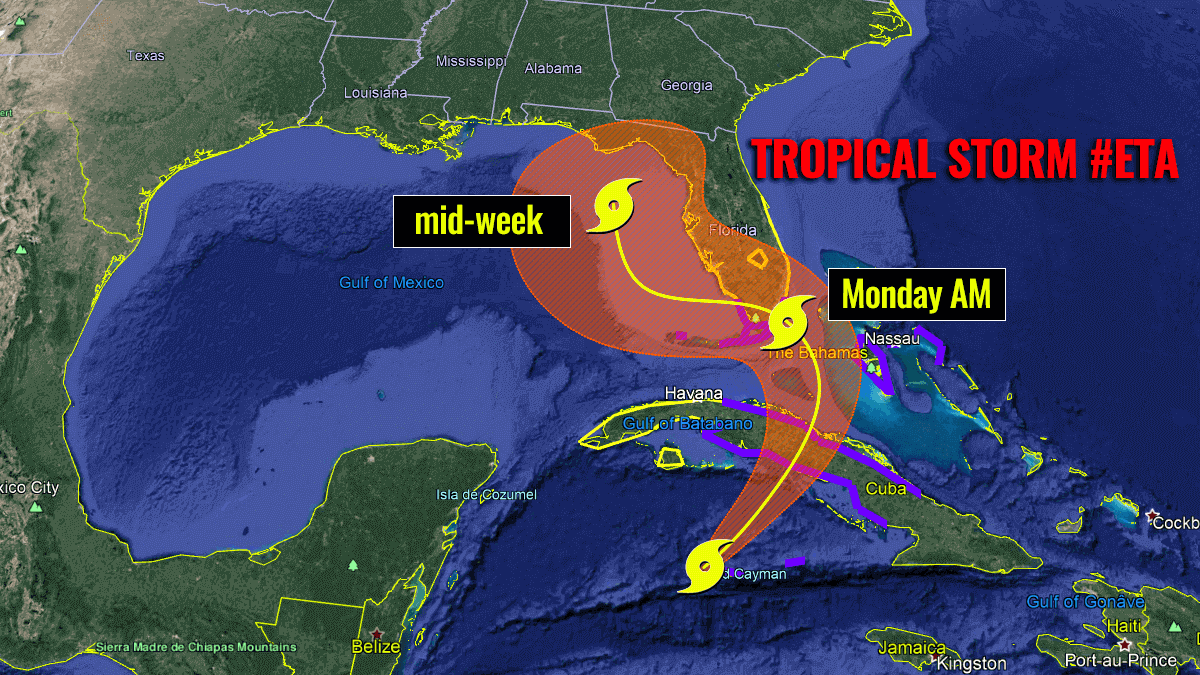Current Weather Patterns and Storm Predictions

Will beryl hit florida – The Atlantic Ocean and the Gulf of Mexico are currently experiencing a period of relatively calm weather. However, there are some areas that are being monitored for potential tropical storm or hurricane development.
Beryl be a tropical storm right now, but e no dey clear yet if e go hit Florida. For more info on Beryl, you fit check the National Hurricane Center website. Dem get all the latest updates on Beryl and other storms.
One area of concern is the Caribbean Sea. A tropical wave is expected to move into the Caribbean Sea later this week. This wave has the potential to develop into a tropical storm or hurricane as it moves westward.
Di weatherman dem seh Beryl might not even hit Florida. Dem seh it could just pass by. But we still need to watch it. We need to make sure we are prepared. We can read more about the Barbados hurricane Beryl online.
Right now, Beryl is a Category 1 hurricane. It is expected to strengthen to a Category 2 hurricane by the time it reaches the Lesser Antilles. We need to stay tuned to the weather forecast and make sure we are ready to take action if necessary.
Areas at Risk, Will beryl hit florida
The areas that are most at risk for being impacted by a storm are the islands of the Caribbean Sea, as well as the southeastern United States. The National Hurricane Center is urging residents in these areas to monitor the progress of the tropical wave and to be prepared for possible impacts.
Historical Storm Data and Impact Analysis: Will Beryl Hit Florida

In order to understand the potential impact of future hurricanes on Florida, it is important to examine historical storm data. This data can provide valuable insights into the frequency, intensity, and paths of past storms, as well as the areas of Florida that are most vulnerable to hurricane damage.
Frequency and Intensity of Past Storms
Historical records indicate that Florida is one of the most hurricane-prone states in the United States. On average, Florida experiences about one hurricane every three years. These hurricanes range in intensity from Category 1 to Category 5, with Category 5 hurricanes being the most powerful and destructive.
Paths of Past Storms
The paths of past hurricanes have varied greatly. Some hurricanes have made landfall in Florida, while others have passed offshore. The most common hurricane tracks are those that approach Florida from the east or southeast. However, hurricanes can also approach from the Gulf of Mexico or the Atlantic Ocean.
Areas of Florida Most Vulnerable to Hurricane Damage
The areas of Florida that are most vulnerable to hurricane damage are those that are located along the coast. These areas are at risk of storm surge, high winds, and flooding. In addition, the areas of Florida that are located in low-lying areas are also at risk of flooding.
Preparedness and Mitigation Strategies

Hurricanes are a destructive force of nature that can cause widespread damage and loss of life. Being prepared for a hurricane can help to reduce the risk of injury or death and minimize property damage.
There are a number of things you can do to prepare for a hurricane, including:
- Develop an evacuation plan. Know where you will go and how you will get there if you need to evacuate.
- Gather emergency supplies. This should include food, water, first aid supplies, and other essential items.
- Secure your home. This includes boarding up windows, securing loose objects, and trimming trees.
There are also a number of resources and support systems available to assist communities in preparing for and recovering from a hurricane. These include:
- The National Hurricane Center. The NHC provides forecasts and warnings about hurricanes, as well as information on how to prepare for and recover from a hurricane.
- The Federal Emergency Management Agency (FEMA). FEMA provides disaster assistance to communities affected by hurricanes, including financial assistance, housing assistance, and other services.
- Local emergency management agencies. These agencies provide information and assistance to communities before, during, and after a hurricane.
By taking the time to prepare for a hurricane, you can help to reduce the risk of injury or death and minimize property damage.
Evacuation Plans
If you live in an area that is at risk of hurricanes, it is important to develop an evacuation plan. Your plan should include the following:
- The location of your evacuation route.
- The destination of your evacuation.
- The mode of transportation you will use to evacuate.
- The contact information for your family and friends.
It is also important to practice your evacuation plan so that you are familiar with the route and the destination.
Emergency Supplies
In the event of a hurricane, it is important to have emergency supplies on hand. These supplies should include:
- Food and water. You should have enough food and water to last for at least three days.
- First aid supplies. These supplies should include bandages, antiseptic, pain relievers, and other essential items.
- Other essential items. These items may include a flashlight, a battery-powered radio, a whistle, and a map.
It is also important to store your emergency supplies in a safe and accessible location.
Home Safety Measures
There are a number of things you can do to secure your home before a hurricane. These measures include:
- Boarding up windows. This will help to protect your windows from breaking and flying glass.
- Securing loose objects. This includes furniture, appliances, and other objects that could be blown away by the wind.
- Trimming trees. This will help to prevent trees from falling on your home or power lines.
By taking these measures, you can help to protect your home from damage during a hurricane.